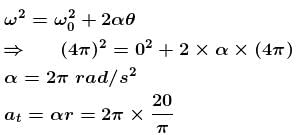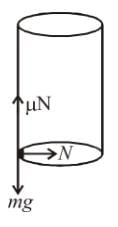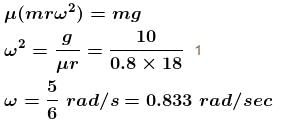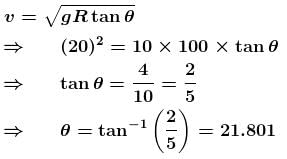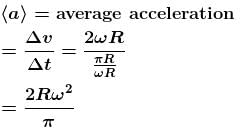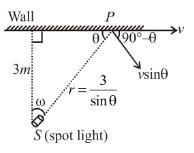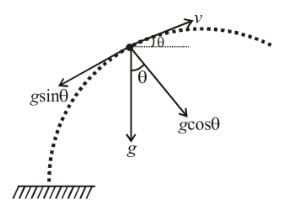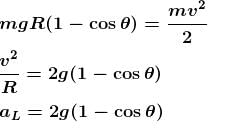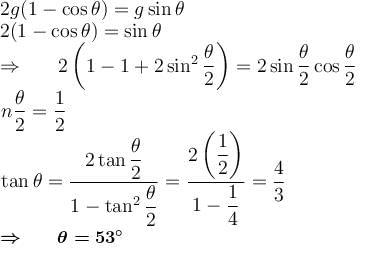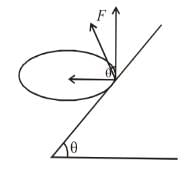Circular Motion NAT Level - 1 - Physics MCQ
10 Questions MCQ Test Topic wise Tests for IIT JAM Physics - Circular Motion NAT Level - 1
A particle moves along a circle of radius (20/π)m with tangential acceleration of constant magnitude. If the speed of the particle is 80 m/s at the end of the second revolution after motion has begun. What will be the tangential acceleration in ms–2?
In the motorcycle stunt called ‘the well of death’ the track is a vertical cylindrical surface of 18 m radius. Take the motorcycle to be a point mass and µ = 0.8. The minimum angular speed (rad/sec) of the motorcycle to prevent him from sliding down should be :
| 1 Crore+ students have signed up on EduRev. Have you? Download the App |
In the figure shown a lift goes downwards with a constant retardation. An observer in the lift observes a conical pendulum in the lift, revolving in a horizontal circle with time period 2 seconds. The distance between the centre of the circle and the point of suspension is 2.0 m. The retardation of the lift in m/s2 is :
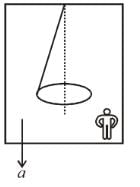

A circular curve of a highway is designed for traffic moving at 72 km/h. If the radius of the curved path is 100 m, the correct angle (in degree) of banking of the road should be given by :
For a body in circular motion with a constant angular velocity, the magnitude of the average acceleration over a period of a half a revolution is how many times the magnitude of its instantaneous acceleration?
A spot light S rotates in a horizontal plane with a constant angular velocity of 0.1 rad/s. The spot of light P moves along the wall at a distance 3m. What is the velocity in ms–1 of the spot P when θ = 45°?
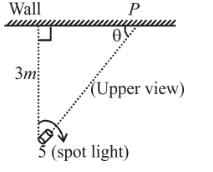
A point P moves in counter clockwise direction on a circular path as shown in the figure. The movement of 'P' is such that it sweeps out a length s = t3 + 5, where s is in metres and t is in seconds. The radius of the path is 20 m. The acceleration in ms–2 of 'P' when t = 2s is nearly.
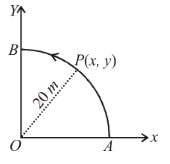
A stone is projected from level ground at t = 0 sec such that its horizontal and vertical components of initial velocity are 10 m/s and 20 m/s respectively. Then the instant of time (in seconds) at which tangential and normal components are acceleration of stone are same is : (neglected air resistance) g = 10m/s2
A ball suspended by a thread swings in a vertical plane so that its acceleration magnitudes in the extreme and lowest positions are equal. The thread deflection angle (in degree) in the extreme position is?
A bird is flying in air. To take a turn in the horizontal plane of radius R = 10m with the velocity v = 10m/s at what angle (in degree) it should bend with the horizontal.




